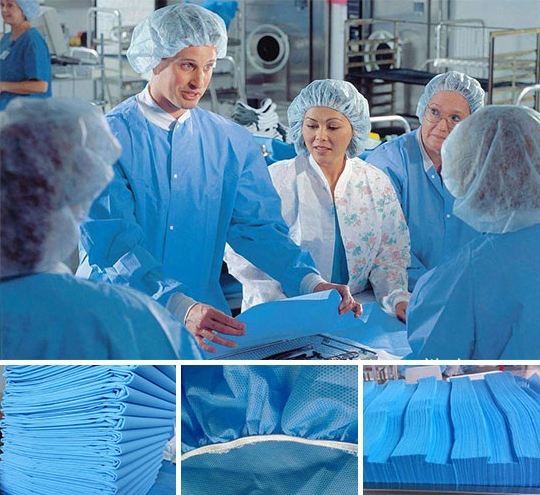Non-woven fabrics have quietly revolutionised numerous industries, and healthcare is no exception. These versatile materials, produced directly from fibres without the traditional weaving or knitting processes, possess unique properties that make them indispensable in modern medical settings.

A Fabric of Many Uses
The applications of non-woven fabrics in healthcare are vast and varied. From surgical gowns and drapes to wound dressings and filtration systems, these materials play a critical role in maintaining a sterile environment and promoting patient recovery.
- Surgical Attire: Non-woven fabrics are widely used in the production of surgical gowns, drapes, and caps. Their fluid-resistant properties help prevent the spread of infections, while their breathable nature ensures comfort for medical professionals.
- Wound Dressings: Advanced wound dressings made from non-woven fabrics offer superior moisture management, promoting healing and reducing the risk of infection. They are often combined with other materials, such as hydrocolloids or foams, to create highly effective wound care products.
- Filtration: Non-woven fabrics are essential for filtration in medical settings. Such as meltblown nonwoven fabric, They are used in surgical masks, air filters, and fluid filtration systems to remove contaminants and protect patients and healthcare workers.
Why Non-Woven Fabrics?
Several factors contribute to the widespread use of non-woven fabrics in healthcare:
- Versatility: Non-woven fabrics can be customized to meet a wide range of performance requirements, from high tensile strength to excellent softness.
- Cost-effectiveness: Non woven fabrics are often more cost-effective to produce than traditional woven or knitted fabrics, making them a viable option for disposable medical products.
- Hydrophobicity and hydrophilicity: Nonwoven fabrics can be engineered to be either hydrophobic or hydrophilic, depending on the specific application. For example, surgical gowns require a hydrophobic barrier, while wound dressings may benefit from hydrophilic properties.
- Breathability: Many non-woven fabrics are highly breathable, allowing for moisture vapour transmission and preventing skin maceration.
The Future of Non-Woven Fabrics in Healthcare
As technology continues to advance, we can expect to see even more innovative applications for non-woven fabrics in healthcare. For example, researchers are exploring the use of nanotechnology to create non-woven fabrics with antimicrobial properties, which could help combat the growing problem of antibiotic resistance. Additionally, the development of biodegradable non-woven fabrics is addressing environmental concerns and promoting sustainability in healthcare.
In conclusion, non-woven fabrics have become an integral part of the modern healthcare landscape. Their unique combination of properties, coupled with ongoing research and development, ensures that these versatile materials will continue to play a vital role in improving patient care.
